As suicide attempts report on a daily basis, mental health experts assert that families and society must take individual warning signals seriously. The pandemic, politics and protracted freeze of routine life, coupled with economic hardships have added a new load to the mental morbidity and some of the people are unable to manage it, reports Minhaj Masoodi
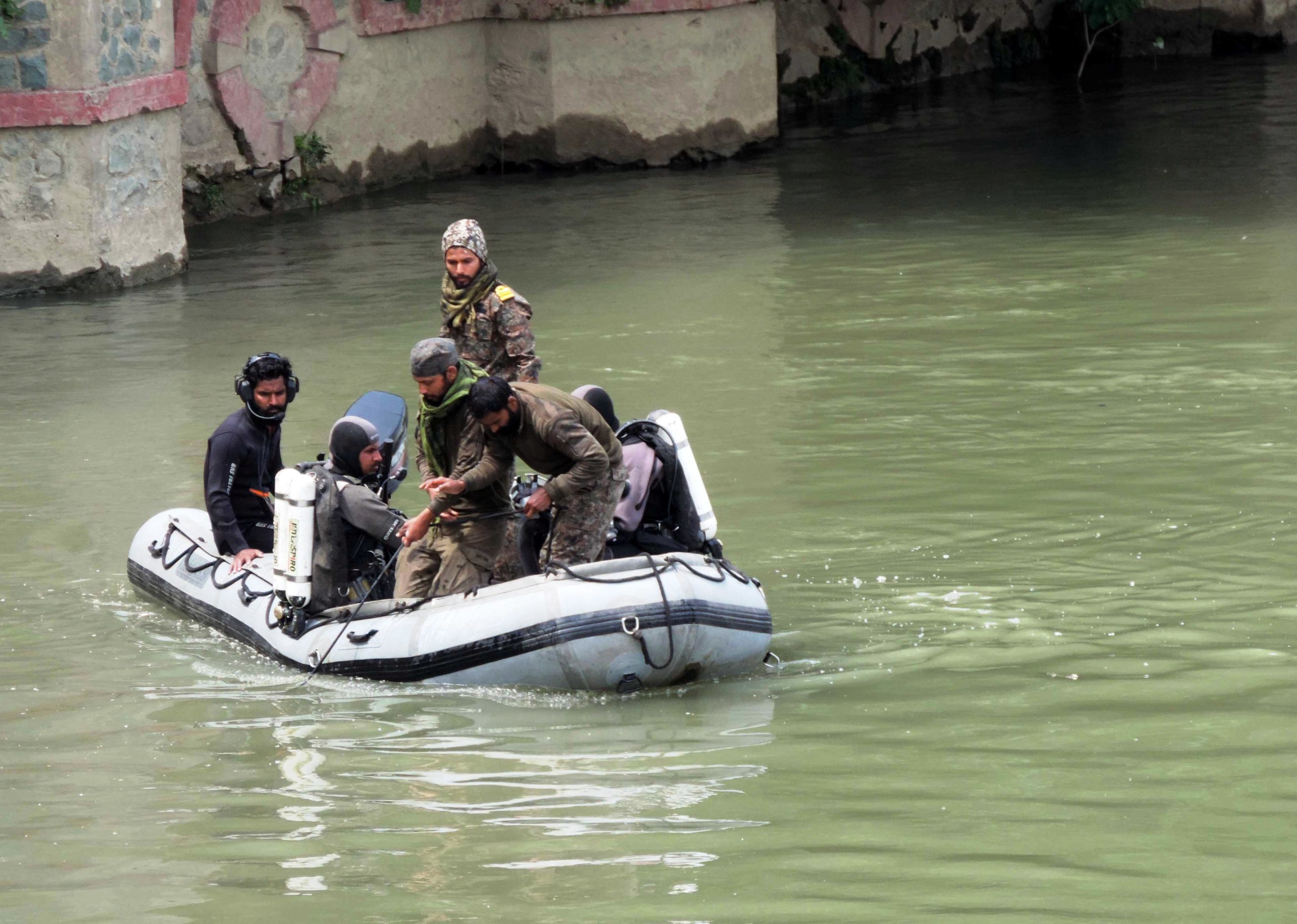
A Block Development Council (BDC) member affiliated with Jammu and Kashmir Apni Party recently attempted suicide for being kept locked in a hotel for the last year. Under the garb of personal security, he alleged he was not allowed to move out or meet his family. For a failed bid to end his life, a case was registered against him. People have dubbed it the first suicide attempt on Naya Kashmir.
Identified as Ashaq Hussain Hurrah, a resident of Magam in Baramulla, he has been living a detainee’s life in Shuria Afaq Hotel in Humhama on the Srinagar Airport Road.
“I am living in Baramulla district but have been kept for the last one year in the hotel in Budgam. I should have accommodation in Baramulla instead,” Hurrah told reporters. “I am facing a traumatic situation as I am not able to meet my two kids and wife. I have put forward my resignation twice because I am not able to go to the Deputy Commissioner where I can put out my resignation papers.”
Under the penal code that is in vogue, an unsuccessful suicide bid is a punishable crime under Sections 309. So police have registered a case (FIR number 178) against Hurrah.
This might be an isolated case from the ‘political’ backdrop but Hurrah is a member of the huge section of the population who found an option in attempting suicide by moving out of his ‘career’.
A Prisoner’s Wife
On July 11, when the Dars’ in Churath (Qazigund) were expecting their daughter-in-law to join them downstairs, they were shocked to find her hanging in her room. She was still breathing and they rushed her to the hospital but she breathed her last well before getting any medical help. With her death died this Ramban girl’s love story.
Married to a cattle trader, Raees Ahmad Dar on November 22, she was with her husband barely for a month when he was arrested on December 26, 2020, in Jammu.
Accused of having links with The Resistance Front (TRF) outfit, Jammu Police Chief Mukesh Singh told reporters that they had input on December 25 about militant movement from Jammu to Srinagar with automatic weapons. The next day, a Special Operations Group (SOG) team, observed suspicious movement of a vehicle and immediately chased it. They soon apprehended two persons with arms. Following this, a case was registered under FIR 359 of 2020 under section 120-B/121/121-A/122 IPC, 7/25 A. Act, 18/20/38/39 Unlawful Activities Prevention Act (UAPA), 1967, at Police Station Bahu Fort. One of the two was Raees.
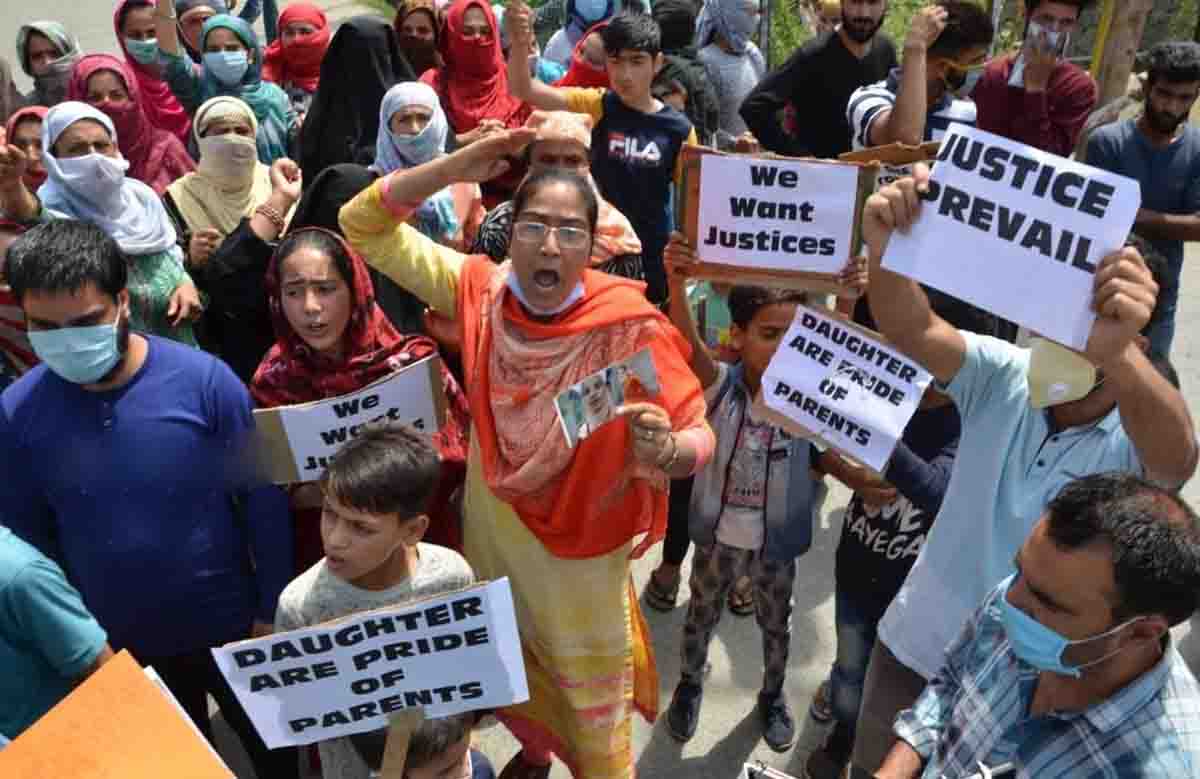
The young bride did visit Raees before the Covid19 changed the protocols for jail visitors. The family members said they knew her pain and did whatever they could to cheer her up. But the stress was taking its toll.
A few days before she killed herself, the lady had visited Achabal along with her sister-in-law, who enjoyed her confidence. She had sought permission to see him in jail – Dar is in Anantnag jail, but she was not permitted.
“We had never imagined she would end her life as she seemed full of life,” her sister-in-law said. “She would survive on the scraps of minutes of conversation she had with her husband in jail. This would make her happy till the next scheduled meet. But lately, when she was disallowed repeatedly, it had taken subliminally toll on her.”
Dar family said she expected him to move out of jail after six months. As it did not happen, a frustrated lady took her life. Eventually, the family drove the young corpse to Ramban for burial.
A Teacher’s Son
On May 28, a video uploaded by a young man from one of the orchards in Kulgam district sent shockwaves everywhere. A visibly emotional and distressed Shoaib Bashir narrated the ordeal of his family on the video.
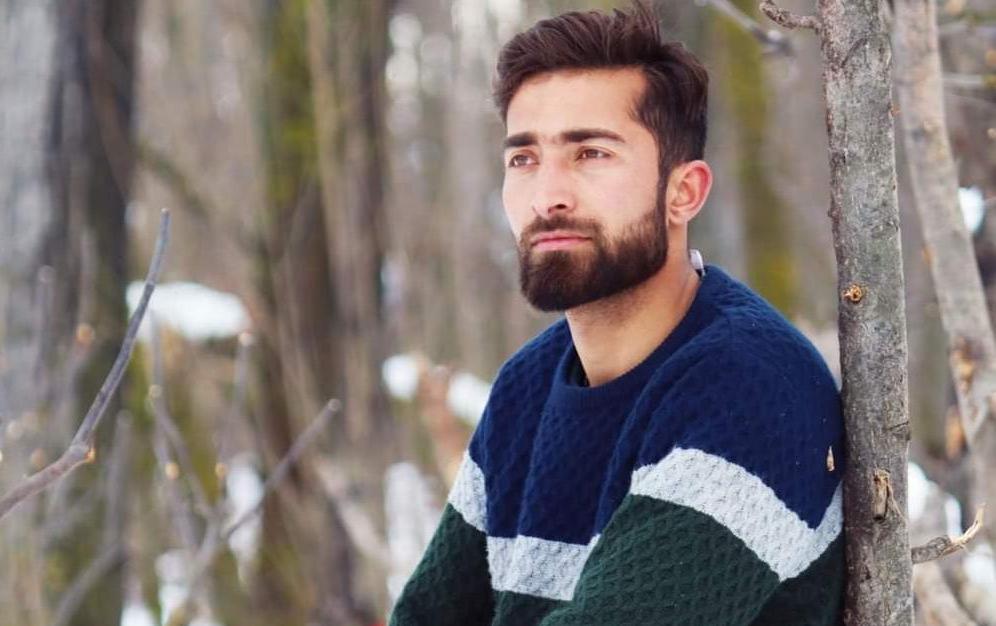
Shoaib’s father, a government teacher had been without his salary for the last 30 months pending an investigation after an adverse report by Jammu and Kashmir Police.
Hailing from Avil village in Kulgam’s Damhal Hanjipora, Shoaib’s father had been a militant during the turbulent 1990s but later surrendered. He was arrested and released in 1999 after the court acquitted him of all the charges.
Shoaib’s father had then joined the education department as a Rehbar-e-Taleem (ReT). After his services were regularised in 2013, the police had given him clearance in their report adding, that he was not taking any part in militancy or any subversive activity. However, in 2019, the government took a decision of re-verification during which Bashir’s past came to haunt him with police citing his militant past in their report. Thus began an ordeal. His salary was withheld which ultimately pushed his family into penury.
Shoaib, seeing his family slowly losing its financial strength got frustrated, which finally led him to end his life by consuming poison. As his suicide dominated the news, an embarrassed government released the salary of a number of school teachers who were caught in the verification crisis.
A Bride’s Death
While Shoaib’s case made headlines, there are many others, the suicide of whom barely makes anything beyond a static, a number. More than three dozen cases of suicides were reported in last three months and a general belief is that there could be many more as some suicides pass on as routine deaths.
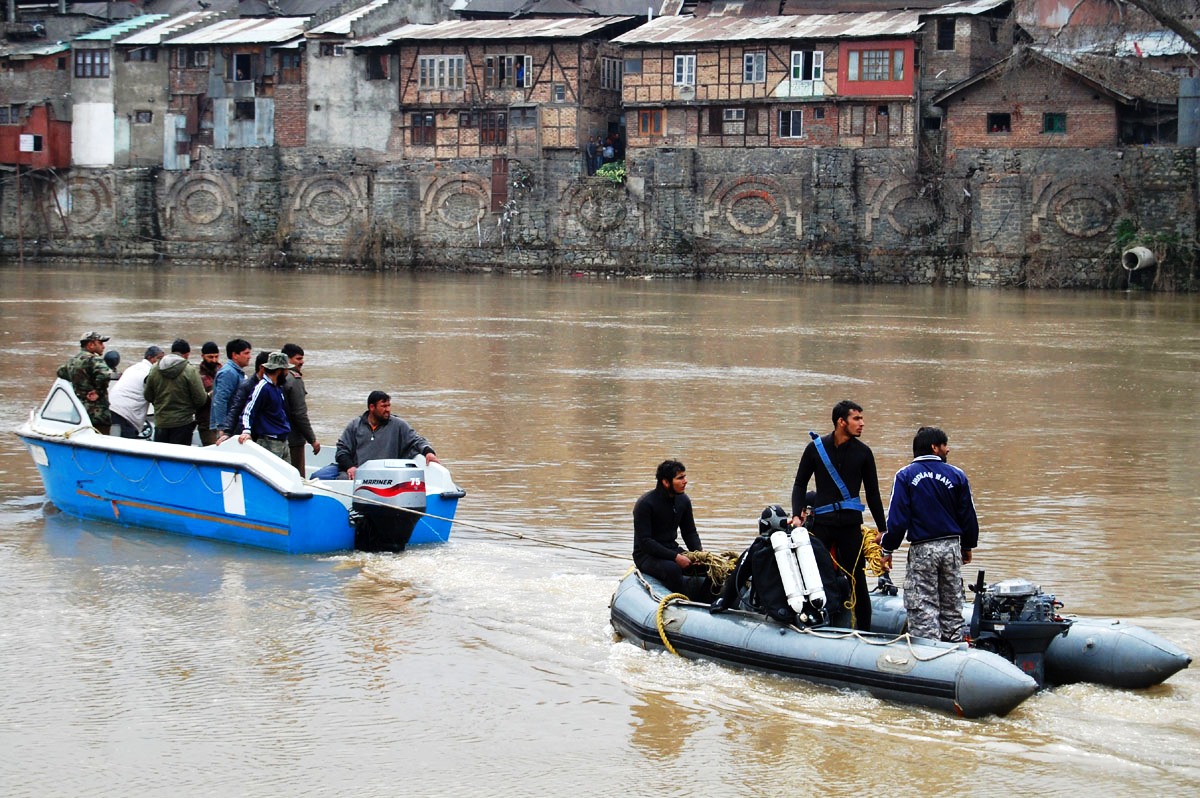
In mid-June, a lady from Batakote Pahalgam allegedly ended her life by hanging herself in her room. In many videos that went viral on social media, her distraught family was allegedly blaming her in-laws for the extreme step.
In one of the videos, her uncle detailed the whole episode. The 22-year-old woman after receiving a call from her fiancé at 11 o’clock on a fateful day had gone into her room to talk. What transpired between the two is not known but from the WhatsApp texts and call recordings that the family had seen, she had threatened to end her life while her would-be husband had allegedly abused her.
“Karo jo karna hai (Do whatever you want),” he had allegedly told her, following which the woman ended her life. The woman had been engaged to the man for six years.
Nothing New
Kashmir is no stranger to these cases. The prevalence of the conflict has affected the people in many ways. According to a report by Médecins Sans Frontiers (MSF), more than 45 per cent of people in Kashmir have been reported to have some sort of psychological distress.
According to the data compiled by the National Crime Records Bureau (NCRB), close to 6000 people have taken their lives in the last thirty years. As per reports, in the last year, more than 500 cases of suicide attempts were reported in Srinagar’s Shri Maharaja Hari Singh Hospital alone.
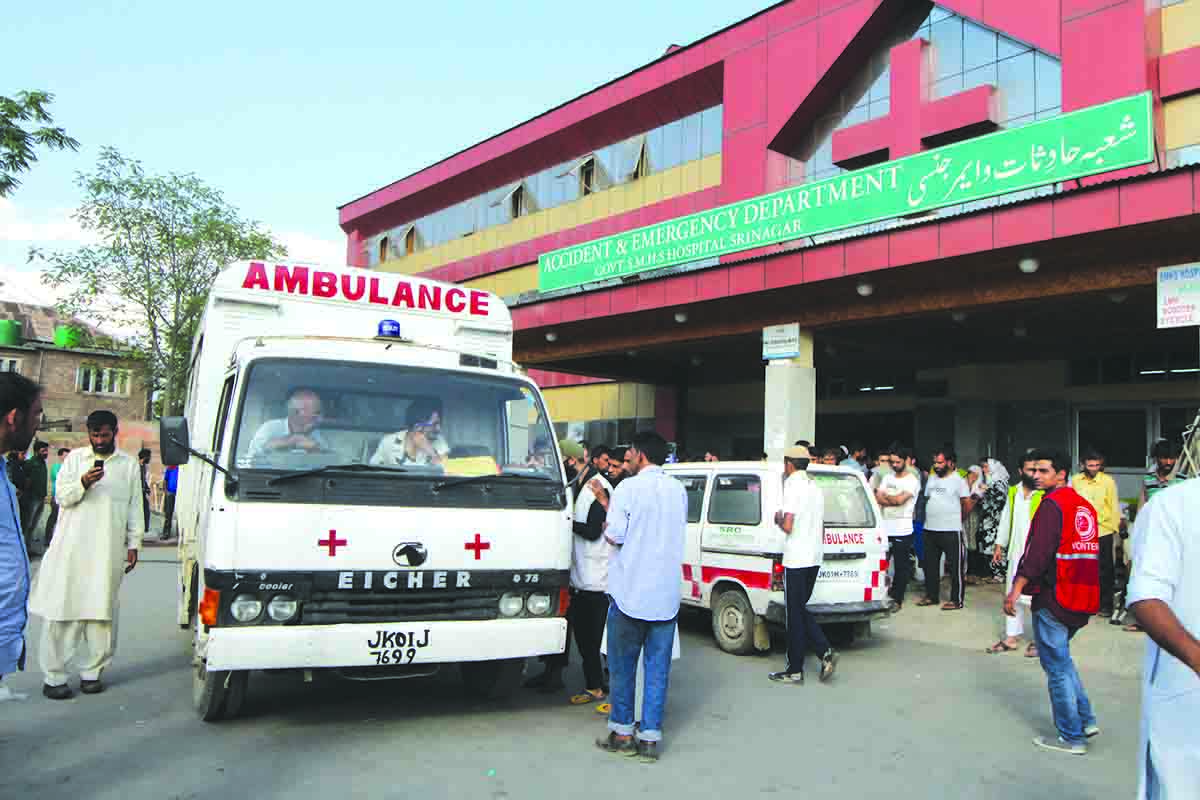
Medical Superintendent, SMHS, Dr Kanwaljit Singh when contacted regarding the data on the number of people whose stomachs were washed after attempted suicides using poison directed to get the information from Resident Medical Officer (RMO). RMO, Dr Asif, said: “We do not have the data available nor do we have the time to compile the data.” Denial of basic information is the new ‘naya Kashmir’ norm.
Kashmir has been witnessing an alarming increase in the number of suicide cases.
Already battered by conflict, people have been pushed to the wall by the pandemic induced lockdowns. Experts say job losses, economic uncertainties, discord in interpersonal relationships are major reasons for the spike in the number of suicide cases.
Attempts Widespread
On June 21, a lady in her thirties attempted suicide along with her infant son near the Aharbal waterfall in south Kashmir. However, timely action by locals foiled her bid. Likewise, a 56-year-old Ganderbal woman allegedly jumped into river Jhelum from Cement Bridge at Noor Bagh, Srinagar. Her body was later fished out by sand extractors near Shalteng in the city outskirts.
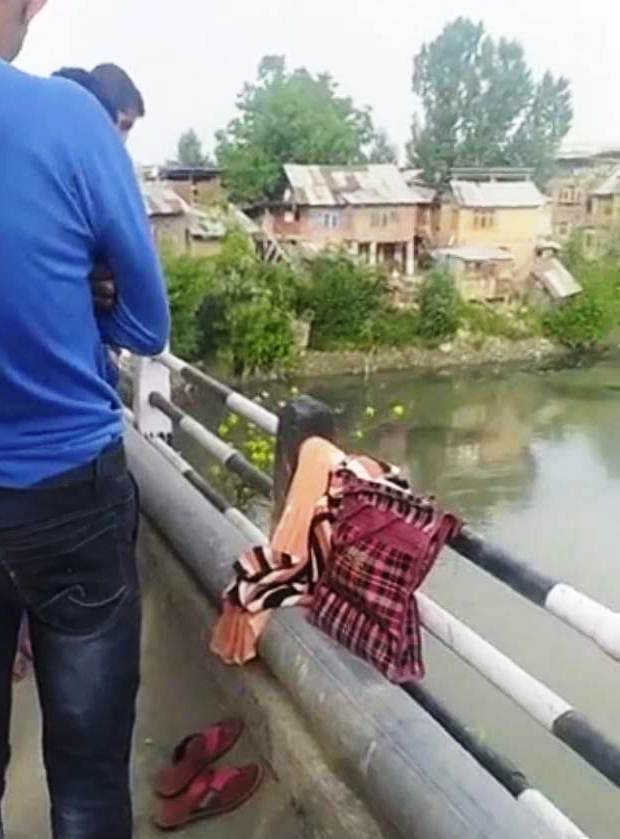
Last month, a patient from Baramulla who was battling cancer ended his life. In April, a woman committed suicide allegedly because of harassment by her in-laws. Later on, the house of her in-laws was set on fire by people, mostly the relatives of the dead lady.
The police register a case after a suicide takes place, the motivation behind the attempts are rarely known.
The Psychology of Suicides
“Suicide is not an isolated event. It does not happen all of a sudden. It is an indication that a person has exhausted all means of being alive. It is a chain of factors that culminate in a single event, suicide,” Wasim Kakroo, a clinical psychologist at the Institute of Mental Health and Neurosciences (IMHANS), Srinagar said, insisting it is important to understand the psyche behind the decision of a person to take his life.
“During this time”, Kakroo said, “A person tries to fall back on his financial support system, his emotional resources, his family support, but his perception of support not being available leads him (or her) to think on extreme lines.”
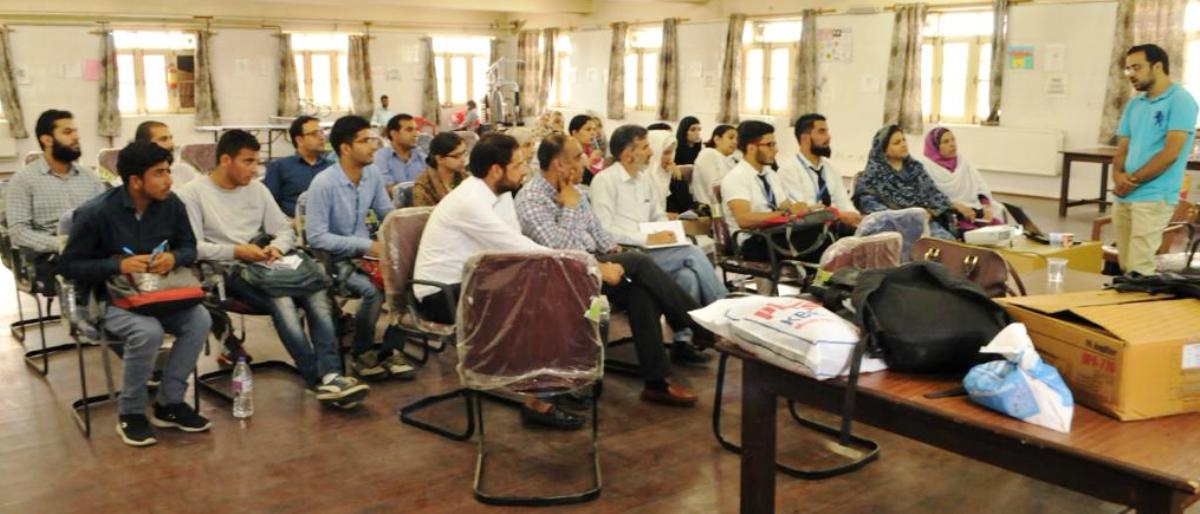
Hinting at the collective failure of society, Kakroo said that suicide is an end product of the lack of empathy and support from basically the family and (then) society at large. “The ‘perception’ of a person that nobody understands or cares for him, or there is no solution to his problems leads him to suicide ideation.” However, according to Kakroo, the seeds of suicidal behaviour are sown early in childhood. They only manifest themselves at later stages.
“Most of the time, these people have faced some sort of emotional neglect or adverse childhood experience, in terms of physical, emotional or sexual abuse. As a result, they become emotionally fragile,” he said.
“With emotional fragility, the distress tolerating capacity is impacted”, Kakroo said. People tend to become impulsive and hot-tempered and it becomes a part of their personality. As a result, the body develops negative coping mechanisms.
“Sometimes, before they turn to suicide, they turn to self-harm or consume drugs. They feel inflicting physical pain is easier to deal with than emotional pain. The lack of positive coping mechanisms causes them to take extreme steps such as suicide,” Kakroo explained.
In order to understand the reason behind people’s decision to commit suicides, Kakroo said that it is important to know there are three groups of people present in our society; those who are mentally healthy, those who have some sort of mental issue and those who don’t have any issue but are genetically and environmentally predisposed and vulnerable to developing mental health issues. It is the latter two groups that Kakroo said need attention.
The Pandemic Impact
While the underlying causes have already been there, the frustration of losing a job, or a loved one or strain in relationships has been exacerbated by the pandemic. The feeling of being locked in homes hasn’t done any good either.
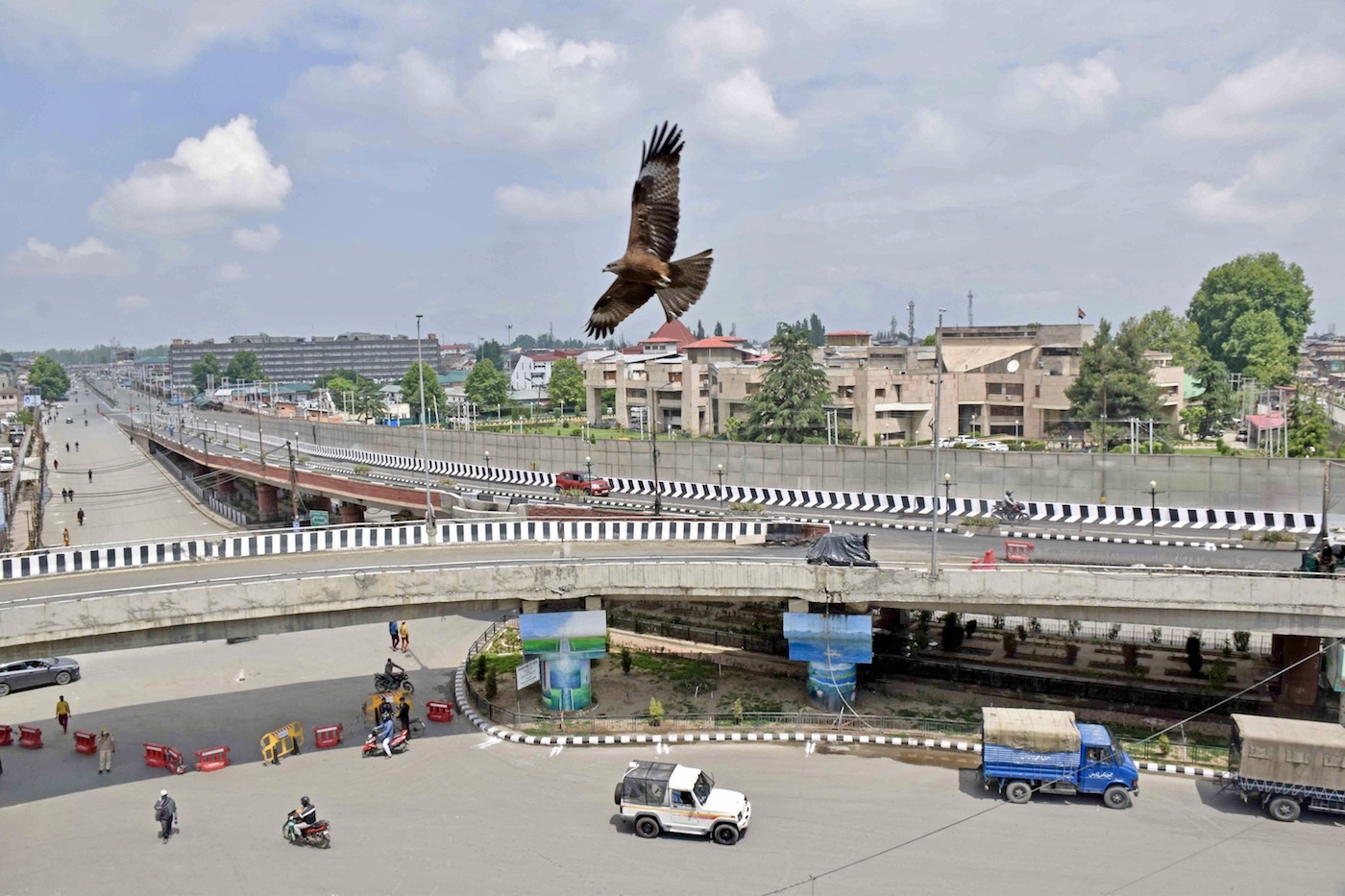
“Pandemic is only exposing the fault lines that were already there,” reasoned Kakroo. “People have this sense of abandonment from caregivers or have problems in their interpersonal relations.”
For adolescents and teenagers’ neglectful parenting or children getting exposed to some traumatic experiences early in their life could be the reason for suicide.
“Children getting exposed to domestic violence or abuse early in their life, conditions them towards a certain frame of mind which may ultimately cause them to take an extreme step,” said Kakroo.
Warning Signs
Experts suggest that people having suicidal thoughts always make distress calls and give signals asking for help. “If a person suddenly says goodbyes, gives away his belongings, hesitates in socializing with other people, or seems hopeless and helpless, these should be taken as warning signs that something is not right,” said Kakroo.
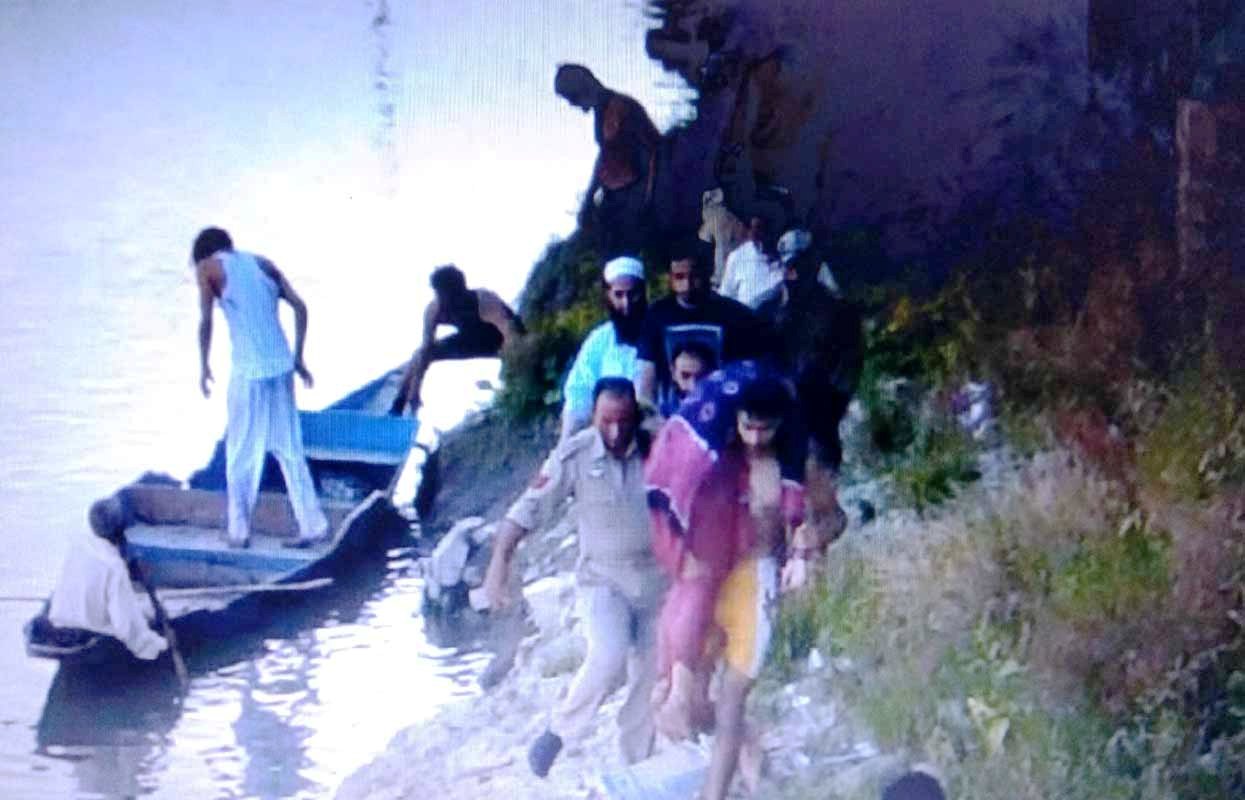
“Remove anything that can be used as a means of committing or attempting suicide and then immediately call a mental health professional. A person will give distress signals most of the time, we just need to be alert to it,” he added.
Media Role
Experts are of the opinion that media plays a significant role. They believe amplification of news regarding suicides in a sensationalist manner could lead to a spike in cases, a phenomenon known as “Imitative or Copy-Cat Suicide”, wherein the population subgroups might find themselves engaging in imitative suicidal behaviours.
Presenting suicide as the inexplicable act of an otherwise healthy or high achieving person may encourage identification with the victim.
“We need to discourage news on suicides,” Dr Arshid, professor in the Department of Psychiatry, Government Medical College, Srinagar said. He has worked on a lot of the issues and is treating hundreds of mentally unwell people. “Instead, the media should focus on people who have successfully overcome depression and are now doing good.”
An Interesting Case
On May 31, a young woman was about to jump into the Jhelum river from Budshah Bridge in the Srinagar city centre when cops and paramilitary men physically saved the lady by literally pulling her out of death from one edge of the bridge. It was dished out that she had family issues.
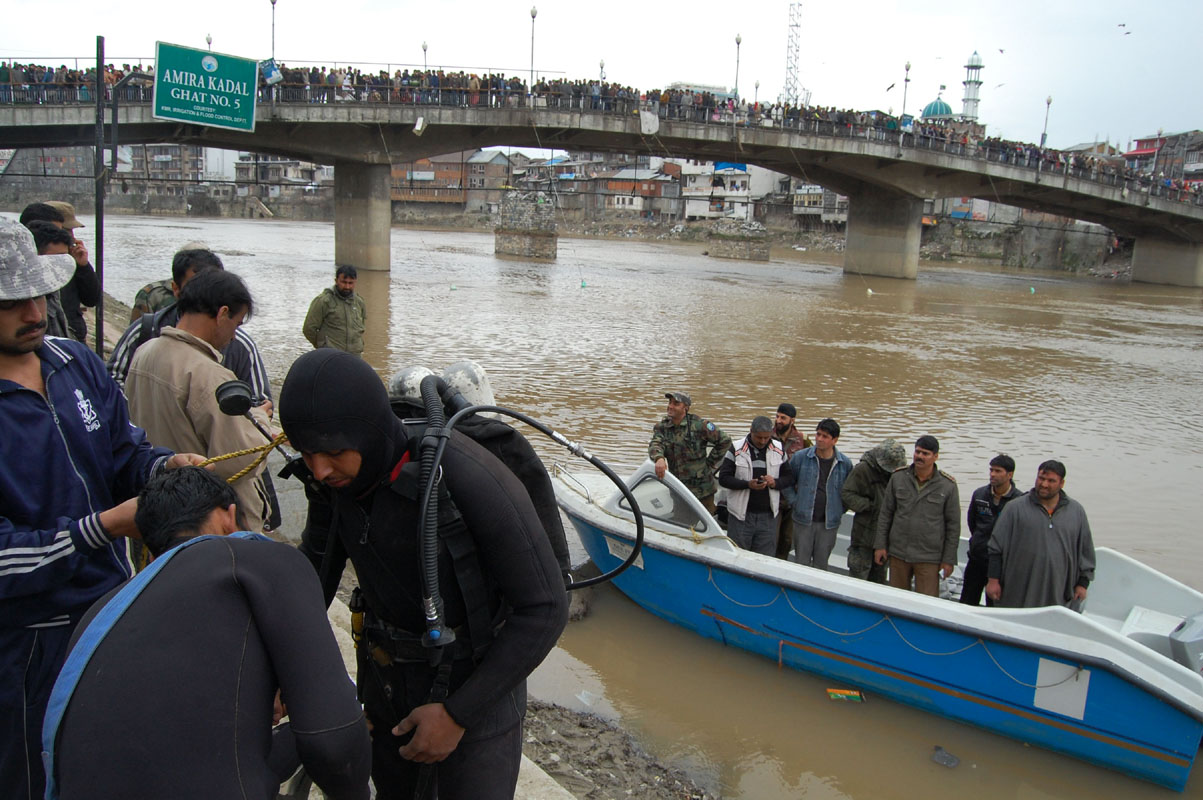
photo by bilal bahadur
More than a month later on July 10, a lady with a little kid in her lap appeared in the Press Enclave and identified herself as the one who attempted suicide. A resident of Maidanpora Chattabal (currently living on rent in Batamaloo), she said she is married to Irfan, a resident of Nowpora Chandrigam (Tral). “He is in Udhampur jail for three years and I have no means to see him,” she said, insisting she has been abandoned by all her relatives.
Within days, she dominated social media as a number of “pages” retold the story emotionally by insisting on the “in-law angle” and seeking support by sharing her bank account number. So huge was the response that within two days a follow-up message got viral asking donors to stop now as already Rs 12 lakh stands deposited.
Her husband, a truck driver, has been arrested for carrying drugs and is in detention. “She has withdrawn most of the amount that people deposited, one respected social worker, who is in the know of things said.
Society Role
The response of society to the suicide cases has been problematic. It has responded to these events by either rebuking those who ended their lives or by romanticizing and justifying their actions.

Society, according to Kakroo, needs to understand the difference between the triggering points and underlying causes of suicide.
“Pandemic is just a triggering point,” Kakroo said. “Society should not morally police people to the extent that they take their lives. Nor should it glorify or justify their actions. It should try to empathize with those suffering.”
“Society is quick to label the suicide as a culprit. It needs to understand, that failure of society to provide support morally or otherwise is what causes suicide in the first place,” Kakroo added.
Faith Matters
Though the guidelines laid down by Islam are clear on suicides, a section of clergy is being blamed for taking a hawkish stand. “We, unfortunately, discuss religion in a very impulsive manner. Our clergy needs to understand the reasons behind the decisions of people taking extreme steps,” Syed Shahid Rashid, who teaches at Kashmir Law College and has done his master’s in Law on Islamic jurisprudence, said. “Our approach should be of a counselling nature. Instead, we dole judgements from the pulpit of a mosque.”
Shahid said that if Islam has proclaimed a punishment as a means of deterrence, it is also important to understand that society must first create an enabling environment for that deterrence to take effect. “We have to properly contextualise everything.”
Calling Islam, a religion of proportionality, Shahid said that people while talking from pulpits of mosques or during webinars and seminars tend to go to extremes. “We hold singular reasons responsible for everything and make sweeping generalisations. We should motivate people to not give up on life and make people understand the essence of struggle in life. Our clergy can play a great role in that regard.”
However, he also held people responsible for setting unrealistic expectations from themselves. “Somewhere down the line, lifestyle changes are also responsible. We have to understand that we cannot fulfil all our expectations.”
Administrative Inertia?
The administration after a series of suicide cases has also woken up from the slumber. The State Disaster Response Force (SDRF) recently launched a 24×7 helpline for those people who are suffering from any mental health issues.
Chief Secretary of the Jammu and Kashmir government, Arun Kumar Mehta inaugurated SDRF’s first Battalion’s 24 x 7 helpline, SUKOON, in collaboration with Mission Youth Jammu and Kashmir and Tourism department, at its headquarters.
The 24 x 7 helpline would offer guidance to persons who are experiencing anxiety, depression, stress, panic attacks, Post Traumatic Stress Disorder (PTSD), adjustment disorder, suicidal thoughts, substance abuse, mental health emergency and pandemic induced psychological stress.
The helpline would guide callers to avail services of clinical psychologists, therapists, counsellors and psychiatrists and provide round-the-clock one-to-one support, free and confidential services to those experiencing mental health issues.
Fencing Bridges
Last time in 2014, when the suicide attempts on the Srinagar’s Amira Kadal Bridge became just a routine, authorities decided to fence the bridge and raise suicide barriers. Generally, those attempting suicide in the periphery consume easily available pesticides and in urban spaces jumping into the river is rampant. The frequent occurrence of suicides from these bridges has helped some youngsters who are doing some sort of business on the pavements to become expert rescuers.
As the 7-ft fence helped the flea market specialists to set up the shop, the mentally unwell people use other bridges. On June 1, a group of CRPF personnel caught hold of a woman at the exact time when she was about to jump into the Budshah Bridge. Though fencing bridges is no solution to helping reduce suicide attempts, these can help to some extent in refusing the space for ending lives. Bridge barriers are being seen as a way out to prevent suicide from bridges.
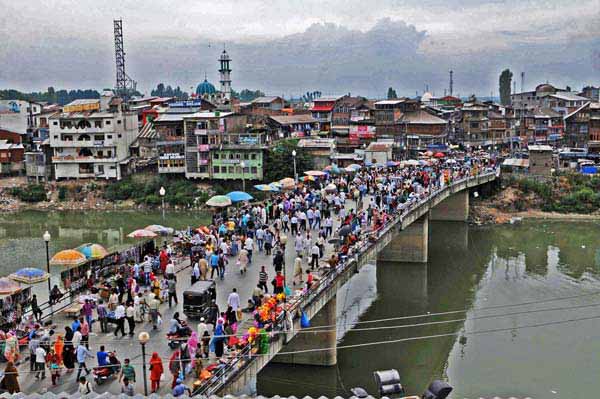
Cement Bridge in Noorbagh, Srinagar has become the new focal point of the suicide bids. As many as 15 people have attempted suicide by jumping from the bridge in a month, with local residents demanding that authorities fence the bridge.
On June 26, last month, a 17-year-old boy, Saqib Ahmad Ahangar from Kupwara uploaded a video before ending his life by jumping into the river from this bridge. With tears in his eyes, he asked for forgiveness from his parents. He had been putting up as a paying guest at Kawdara in Nawa Kadal. His body was fished out a few days later.
However, Chief Engineer, Public Works Department (PWD), Kashmir, Shaukat Jeelani Pandit said every bridge has an engineering code. “We have to go by codes given by Indian Roads Congress (IRC) for bridges. Increasing of heights is not recommended under those provisions.”
“But, if the administration wants us to barricade the bridges, then we will,” he added.
District Magistrate, Srinagar, Asad Aijaz said that no structure can be a cause of the suicide. “Those who intend to commit suicide will find some other means to do so, even if we fence the bridges,” Aijaz said. “But, because the bridge happens to be a facilitator, I have asked the PWD to make a design for alteration of the bridge which acts as a barrier. They are on it. It will be taken up.”
Off late, some nongovernmental organisations have also stepped in and are taking calls for online consultations and counselling. But the quantum of the mental morbidity would require a much larger effort at all levels, experts insist.
(Khalid Bashir Gura contributed to this report.)















